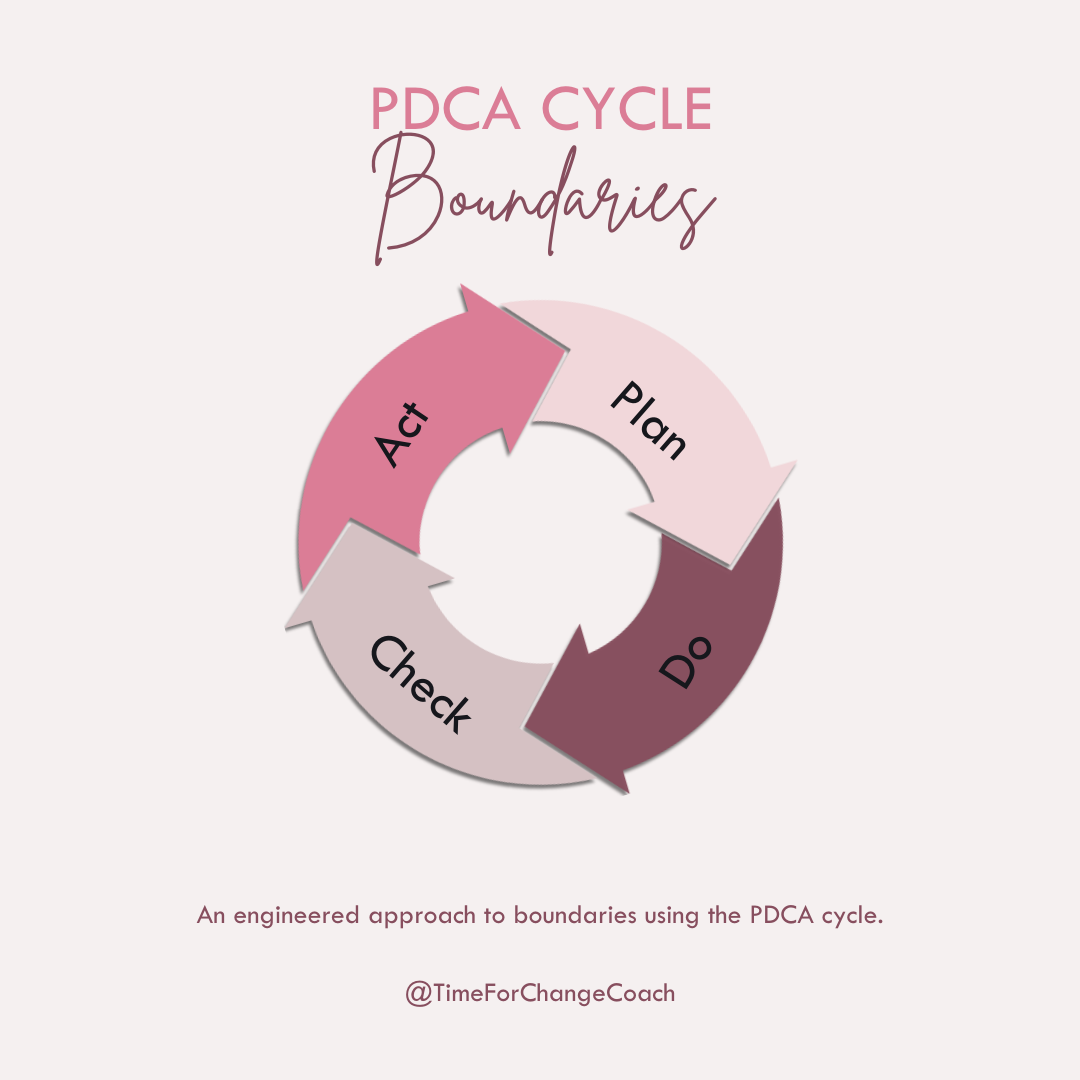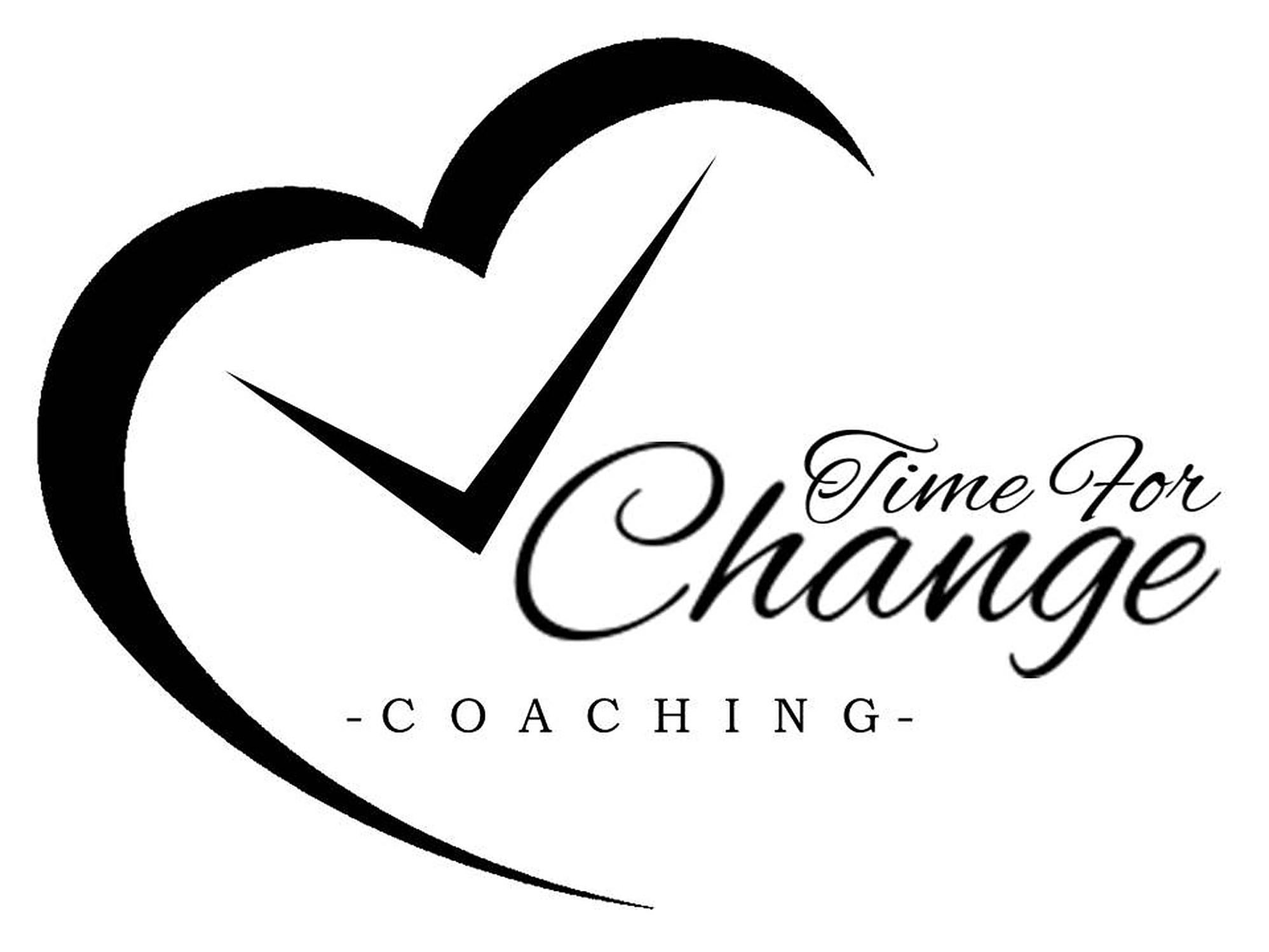
Boundaries
Being an engineer at heart, as with most concepts I encounter, I like to apply the Deming PDCA Cycle of continuous improvement to other topics such as in this post on Boundaries. I hope to share some practical steps you can apply immediately, personally or professionally, to any relationship involving other humans.
PDCA x Boundaries
So, with great anticipation, I present the introduction to the cross between the Plan-Do-Check-Act (PDCA) cycle and Boundaries.

What are Boundaries?
Boundaries are defined by Dr. Henry Cloud and Dr. John Townsend, co-authors of one of my all-time favorite books, as an invisible property line that “define what is me and what is not me” (p. 31). Being aware of the existence of the delineation of self verses external beings is critical in knowing what you can and cannot control. In the table below, the boundary is the line between the things that are “mine” on the left and all the other things on the right that are “not mine.” Understanding this concept and applying the knowledge is powerful in releasing experiences of anxiety.
|
Mine |
Not Mine… |
|
Feelings Attitudes Beliefs Behaviors Choices Values Limits Resources Gifts Thoughts Desires Love
|
Other’s feelings Other’s attitudes Other’ Beliefs Other’s Behaviors Other’s Choices Other’s Values Other’s Limits Other’s Resources Other’s Gifts Other’s Thoughts Other’s Desires Other’s Love |
I like to think of Boundaries as a fence, perhaps with a gate that separate two entities. Boundaries exist to “help us keep the good in and the bad out” (p.33). Practically speaking, some examples of boundaries include:
- Skin: keeps your internal components (blood, bones, organs) in and external things (germs, splinters, etc.) out.
- Words: “define your property for others as you communicate your feelings, intentions, or dislikes” (p.36)
- No is a complete sentence.
- Geographic Distance: walking into another room to deescalate a heated discussion.
- Time: taking a few days to consider a promotion.
- Emotional Distance: limiting the energy given to certain relationships to protect self.
- Other People: important cooperate decisions are often made by majority vote of key, selected advisors.
Just like when you trespass on a neighbor’s property, there are consequences. Boundary conflicts occur when the “me” and “not me” become foggy. There is hope to resolving such conflicts, while often lead to anxiety or anger, through the evaluation and development of healthy boundaries. The PDCA cycle approach will provide guidelines in taking practical steps to accomplish the task of making changes to boundaries.
Developing Healthy Boundaries
Plan
Start engineering your own continuous improvement of boundaries by planning effective actions. After reviewing the definition and examples presented above, consider if the following statement applies to you:
-
- True or False: I am aware of my boundaries in context of important relationships.
- Self True False
- Spouse True False
- Parent(s) True False
- Sibling(s) True False
- Child(ren) True False
- Manager, Co-Worker(s), or Team True False
- Friends True False
- For each specific important relationship, on a scale of one to five, where one is an open gate and five is an iron-clad fortress, rate how you communicate and enforce my boundaries to others effectively:
- Self 1 2 3 4 5
- Spouse 1 2 3 4 5
- Parent(s) 1 2 3 4 5
- Sibling(s) 1 2 3 4 5
- Child(ren) 1 2 3 4 5
- Manager, Co-Worker(s), Team 1 2 3 4 5
- Friends 1 2 3 4 5
- Of your responses, consider the most important relationship for you to first address and circle it.
- Consider reading the book for yourself or seek out special versions of the book for marriage, parenting, dating, or business.
- True or False: I am aware of my boundaries in context of important relationships.
Do
Using the answers to the questions in the Plan step to guide you, decide on effective next steps to work towards improving your boundaries.
-
- Identify where current boundaries are currently ineffective or non-existent. To start, think of your most important or high-contended relationships such as your spouse, parents, or employers.
- Apply any applicable Laws of Boundaries from Chapter Five to the specific relationship and identified boundary issues:
- Law of Sowing and Reaping: Based on the principle of reaping whatever you sow, often times ineffective boundaries result in other people interrupting the consequences of actions which lead to enabling of behaviors or co-dependent behaviors (p. 86-88).
- Law of Responsibility: You are responsible for what is within your “fence” and issues arrive when individuals take on responsibilities of others (p.88-89).
- Law of Power: In order for any change to be effective, the individual must accept reality or trust, humble themselves by asking for help, seek power from Authorities, and make the choice to make good decisions. The Alcoholics Anonymous (AA) twelve step program is based heavily on this principle.
- Law of Respect: The golden rule: do onto others as you would have done to you (p. 91-92).
- Law of Motivation: Boundaries can be messed up when they are driven by fears (p. 92-94). Much time in therapy can be spent on traumatic childhood experiences and individuals coping mechanisms that manifest in misappropriated motivations later in life.
- Law of Evaluation: Things can hurt and not harm us and things that feel good can even be harmful (p. 95).
- Law of Proactivity: “For every action, there is an equal and opposite reaction” (p.97). So while implementing boundaries may come with an uncomfortable reaction period, the end result of healthy boundaries far outweighs temporary relief from avoidance.
- Law of Envy: This principle draws the focus away from our individual circumstances and on to others which leads to negating individual “actions and comparing themselves to others, staying stuck and resentful” (p.99-101).
- Law of Activity: Being passive and not taking action leads to broken boundaries (p.101-102).
- Law of Exposure: As humans, we do not exist on our own private island and because we are exposed to other people and their boundaries, we must communicate our own boundaries to others. “An important thing to remember about boundaries is that they exist, and they will affect us, whether or not we communicate them” (p. 103).
Check
After understanding personal boundaries in the context of various relationships and analyzing potential boundary breaches, there will be an adjustment period involving trial and error of what steps are effective in restoring or establishing boundaries. Periodically check in on the areas you are focused on to determine the effectiveness or need to make adjustments.
Act
Here are a few practical action steps to take immediately following this article for various readers:
- The burnt-out working professional who feels pulled in all directions and empty or anxious internally: Practice saying “No.” (a complete sentence) a few times this week to protect your boundary of Time either personally or professionally to protect a few moments to establish the day on your terms and clarify your priorities.
- The manager who fears repercussions for not meeting year end performance targets: Practice identifying what factors are motivating your performance at work and initiate a meeting with your supervisor or team to brainstorm different solutions to drive favorable performance.
- The individual contributor employee who seems to have a surplus of tasks and a deficit of time: Apply the Law of Responsibility to your work tasks and consider which activities are important, urgent, and meaningful to your individual roles and responsibilities in how you add value to the company. After identifying a few key areas, initiate a meeting with your supervisor or team to redistribute or eliminate tasks that do not meet company objectives. Bonus points if no defined company objectives or roles and responsibility descriptions exist as you can present drafting these as a starting point to the conversation with others.
- The anxious person: identify the areas causing internal discomfort to you and brainstorm possible breaches in boundaries. Consider if you are taking on other’s responsibilities, communicating boundaries effectively to others, or if your motivations are stemming from fears. Often a long list of “stressors” causes more anxiety so perhaps set a timer to limit brainstorm time and commit to just one topic/relationship/issue at a time. Feel free to reach out to a trusted person or group to support you in these exercises.
Next Steps
Set an alarm, alert, or reminder on your phone or computer device in the next 24 hours to address the first step in improving your boundaries.
Boundaries are one of my favorite topics and I’d love to discuss your thoughts on them.
